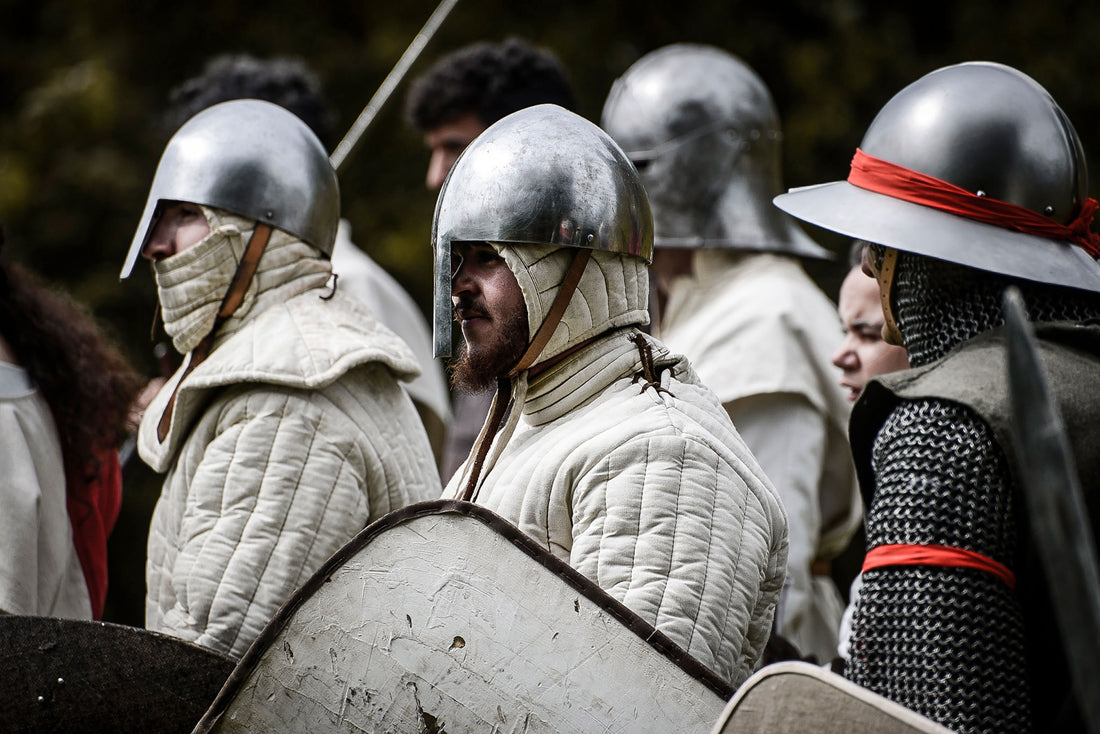From Sekigahara to Alesia: Unveiling the Martial Mastery of the Ages
History is a tapestry woven with tales of valor, conquest, and epic battles that echo through the annals of time.
These conflicts were defined by the martial prowess of warriors who wielded an array of remarkable weapons.
Join us as we journey through history to revisit some of the most famous battles of the medieval and ancient eras and explore the iconic weapons that turned the tides of war.
The Battle of Sekigahara (1600): Samurai Katana and the Unification of Japan
In 1600, the Battle of Sekigahara marked a turning point in Japanese history.
This decisive conflict saw the rise of the Tokugawa shogunate and the unification of Japan.
Samurai warriors played a central role, wielding the legendary katana swords.
These curved blades were prized for their sharpness, versatility, and symbolic significance.
The Viking Siege of Paris (845): Axes and Norse Prowess
In 845 AD, Viking warriors launched a daring siege of Paris, testing the city's defenses.
Viking axes, famed for their brutality and efficiency, played a significant role in this conflict.
Norse warriors, with their mastery of these weapons, wreaked havoc on the city's defenses, leaving a lasting mark on medieval history.
The Persian Invasion of Sparta (480 BC): The Spartan Phalanx and Xiphos Swords
During the Greco-Persian Wars, the Persian invasion of Greece led to a pivotal clash at the Battle of Thermopylae.
Spartans, renowned for their discipline and the phalanx formation, wielded short swords known as xiphos.
These swords were ideal for close combat and played a vital role in the heroic defense of Sparta against overwhelming odds.
The Battle of Alesia (52 BC): Roman Legions and Siege Engines
Julius Caesar's siege of Alesia marked a critical moment in the Gallic Wars.
Roman legions, armed with gladii and pila, showcased their formidable organization and tactics.
Caesar's forces also employed siege engines like ballistae and siege towers to breach Alesia's defenses, showcasing Roman engineering prowess.
The Battle of Sterling Bridge (1297): William Wallace and Scottish Spears
One of the most iconic battles in Scottish history, the Battle of Sterling Bridge, pitted the forces of William Wallace against the English.
The Scottish army, armed with spears and displaying exceptional tactical acumen, defended their homeland against English cavalry.
This battle highlighted the effectiveness of spears and the role of strategic positioning in medieval warfare.
The Battle of Agincourt (1415): Longbows and Triumph of the English
In one of history's most famous archery displays, English longbowmen secured victory against the French at Agincourt.
The English longbow, a powerful weapon with exceptional range and accuracy, devastated the French knights.
This battle showcased how skilled archers, using bodkin-tipped arrows, could pierce even the strongest armor.
The Siege of Constantinople (1453): Cannons and the Fall of an Empire
The Siege of Constantinople marked the end of the Byzantine Empire and the rise of the Ottoman Empire.
Among the innovations that contributed to this victory was the use of cannons. These powerful artillery pieces, including bombards and culverins, shattered the city's walls, forever changing the course of history.
The Battle of Hastings (1066): The Bayeux Tapestry and Norman Swords
The Norman Conquest of England was sealed at the Battle of Hastings.
Iconic weapons of the time, including the Norman sword, played a pivotal role. With their broad, double-edged blades, Norman swords delivered deadly blows that helped secure the throne for William the Conqueror.
The Battle of Crecy (1346): English Warbows and the Black Prince
Another English triumph in the Hundred Years' War, the Battle of Crecy, showcased the devastating power of the English warbow.
These bows, wielded by skilled archers, could penetrate armor from great distances.
Under the leadership of the Black Prince, the English longbowmen played a crucial role in securing victory.
The Siege of Orleans (1429): Joan of Arc and the French Sword
During the Hundred Years' War, the Siege of Orleans marked a turning point. Joan of Arc, leading the French forces, rallied the troops to lift the siege.
French soldiers used a variety of weapons, including swords, to fend off the English.
The French victory was a testament to the leadership of Joan and the determination of her countrymen.
The Battle of Poitiers (1356): The Captive King and Weapons of Knights
The Battle of Poitiers was another significant engagement in the Hundred Years' War.
English longbows and polearms were prominent weapons on the battlefield. The battle's outcome saw the capture of the French King John II and underscored the importance of well-equipped knights and archers.
The Siege of Acre (1291): Trebuchets and the End of the Crusades
The Siege of Acre marked the end of the Crusades and was notable for the use of trebuchets.
These massive siege engines launched heavy projectiles, including stones and flaming missiles, into the city walls.
Trebuchets were instrumental in breaching fortifications during medieval sieges.
The Battle of Bannockburn (1314): Scots and the Schiltron
At the Battle of Bannockburn, the Scots, led by Robert the Bruce, used a tactical formation known as the schiltron.
This circular defensive formation, often armed with spears and pikes, effectively repelled the English cavalry charges and secured a historic victory for the Scots.
The Legacy of Medieval and Ancient Battles and Weapons
These famous battles are not just tales of warfare; they are chapters in the rich tapestry of human history.
The weapons used in these conflicts, from longbows to swords and trebuchets, defined an era and the warriors who wielded them.
As we explore these battles, we gain a deeper appreciation for the martial mastery and enduring legacy of the medieval and ancient ages. Each weapon, each clash of arms, is a testament to the courage and ingenuity of those who fought for honor, kingdom, and glory.

